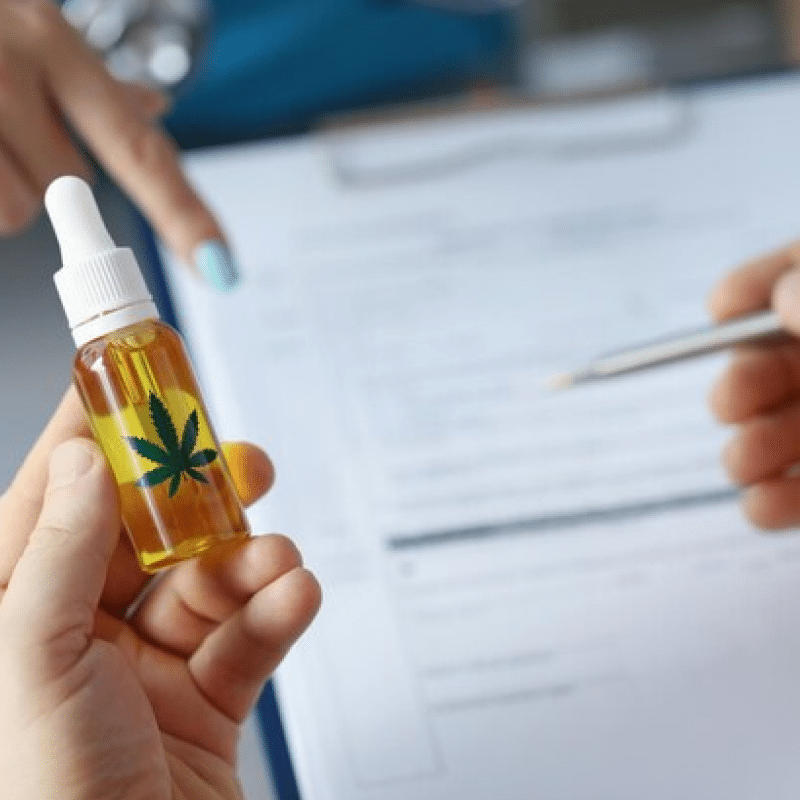What Is a Certificate of Analysis (COA) in Cannabis? Everything You Need to Know
In the complex and rapidly evolving cannabis industry, a Certificate of Analysis (COA) is more than a simple compliance document—it is a critical tool for business success. For cultivators, processors, and retailers, COAs are the bedrock of brand integrity, providing irrefutable proof of product safety, quality, and regulatory adherence. Leveraging this transparency not only mitigates legal risks and potential product recalls but also serves as a powerful differentiator in a crowded marketplace, allowing leaders to build lasting consumer trust and a reputation for excellence.

COAs are one of the most important facets of the cannabis industry. These documents provide confirmation for consumers on what’s in their products and protection for brands, demonstrating regulatory compliance and the potential for market differentiation. Here’s everything you need to know about cannabis certificates of analysis.
What Exactly Is a Certificate of Analysis (COA)?
A cannabis COA is a document that comes from a licensed, third-party testing lab, certifying the potency and purity of a cannabis product. A COA tells consumers exactly what’s in their weed, detailing the tests a lab has run on a product and those results. Certificates of analysis are often referred to as “lab results.”
COAs exist so that consumers can enjoy cannabis confidently, knowing exactly what products contain, such as cannabinoids, terpenes, and do not contain, including mold, pesticides, byproducts of extractions, or other potentially harmful compounds. Each state has its own rules and regulations for COA regarding safe limits of contaminants, compounds tested, and allowable byproducts.
COAs are like nutritional labels for cannabis. They help build trust between consumers and brands, ensure product safety, and provide a benchmark for quality products. While there are some challenges around lab shopping, COAs are a massive differentiator for consumers using the legal market versus the illicit market.
4 Key Components of a Cannabis COA
COAs vary from state to state, but generally, you’ll find information on the following categories in your lab results, regardless of where you’re buying cannabis products.
1. Cannabinoid Profile
Cannabinoids are one of the most important compounds that labs test for. A COA shows exactly how potent a product was at the time of testing. Nearly every cannabis COA includes results for THC, but this will often be broken down into a few categories: total THC, THCA, and THC. Most of the other terpenes are also broken down into acidic and neutral line items: CBDA and CBD, CBGA and CBG, etc.
Most COAs will also include test results for minor cannabinoids like CBC, THCV, and CBDV. Even a small percentage of minor cannabinoids can have a big impact on the experience, so reading the COA helps ensure consumers understand what’s in their product.
If you’re looking at a COA for cannabis flower, expect to see much higher concentrations of acidic cannabinoids like THCA and CBDA, while an edible or tincture will have almost no acidic cannabinoids.
Potency is measured in two ways on a COA: LOD and LOQ. LOD stands for limit of detection, and it’s the lowest analyte amount that can be reliably “distinguished” from other compounds. LOQ stands for limit of quantitation or detection, and it’s the lowest level at which a compound can be accurately measured. You may also see potency results listed as a percentage or results in milligrams per gram.
2. Terpene Profile
Terpenes are aromatic compounds that exist in every plant in nature, and have a big effect on the smell, taste, and even the potential therapeutic effects of cannabis products. Testing for terpenes isn’t mandatory in every state, but doing so helps consumers better understand which products work for them and why.
Commonly found terpenes on cannabis COAs include myrcene, caryophyllene, pinene, limonene, and linalool. These are not the only terpenes in cannabis, but they are the five most common. The presence of terpenes is important for the entourage effects, and explains why strains that are similar in cannabinoids may have different effects. Testing for terpenes can help differentiate a product in a crowded marketplace, particularly if it has unusual terpenes for cannabis.
3. Contaminant Testing
Contaminant testing is perhaps the most important piece of a COA, proving that retail cannabis products are safe. Most states test for common pesticides and heavy metals that can be harmful to people’s health, especially when inhaled from flower or concentrates.
COAs also typically test for microbial contaminants, including mold, mildew, and bacteria, mycotoxins, foreign matter, and residual solvents from the extraction process. Every single line item for contaminants should come back as “ND” or not detected for consumer safety. While some contaminants have allowable levels, the safest products do not have any.
4. Other Important Information
Consumers can use the COA to find the lab that tested their products and research its accreditation status. COAs can also be used to find product information, like the batch number and date tested, to get an idea of how old the products are. Lab results typically also detail the testing methodology, if you want to get technical information.
Why Is a COA Indispensable in the Cannabis Industry
In the highly regulated and rapidly evolving cannabis industry, a COA is not merely a document but a cornerstone of safety, quality, and consumer trust.
For Consumers
COAs are crucial for the legal cannabis industry because they ensure consumers are safe and brands are complying with regulations.
When buying products in the illicit market, consumers have no way of knowing if their products actually contain the compounds they should. But COAs make the potency and purity of the product clear and easy to see. Consumers know their products are safe and that they’re getting the potency they pay for.
COAs can also be used to inform future purchasing decisions, based on minor cannabinoid content or the terpene profiles.
For Businesses (Cultivators, Processors, Retailers)
COAs provide protection for businesses as well, demonstrating compliance with regulations and providing a safety net against product liability and recalls. Over time, COAs help brands create more consistent products by understanding the chemical profile of each, which increases quality control.
COAs can also be used as a marketing tool to build a brand’s reputation as safe and transparent, potent, or diverse.
For Regulators
COAs are a favorite tool of regulators to enforce public health and safety standards. These documents provide important data for market oversight and policy development and give regulators a leg to stand on over the unknowns and potential risks of illicit products.
How to Read and Interpret a COA Like a Pro
Reading scientific documents isn’t something that most consumers are practiced at, but it doesn’t take long to learn how. Most COAs are linked through a QR code on the product’s packaging. However, some brands only provide a reference or batch number, which you have to match to a linked lab result on the brand’s website.
This article from True Labs for Cannabis breaks down a COA and how to read one well. But if you’re looking for the short and sweet version on how to read a cannabis certificate of analysis, here it is:
- Labs must include their accreditation on the COA. It’s usually in the top right corner of the document, or all the way on the bottom.
- Find the date of testing, typically in the top left corner. The testing dates give you an idea of how long your product has been sitting since packaging.
- Match the batch number on the product with the batch number on the COA.
- Check the potency by mg/g and percentages. Compare the lab results with your expectations. If a vape product claims to have 97% THC, but five hits barely register, it’s likely not accurate, which is a red flag.
- Check the contaminants section for pass/fail on potential toxins. If you see “fail” in any category, that’s a red flag.
Additional red flags on COAs include missing information like cannabinoid testing, an unaccredited lab, and inconsistent results. If a brand fails to provide its COAs, that’s a major red flag.
The Regulatory Landscape and COAs
Each cannabis market exists in a silo, with its own rules and regulations around testing, packaging, and COAs. Since cannabis is still federally illegal and there is no accepted standardized way to test or present test results, COAs will look different from state to state.
Some brands only test for the legal bare minimum, while others go above and beyond to make sure consumers have the information they need. The brands that embrace COAs are the ones that move the needle with consumer opinions, repeatedly proving their products are as safe and potent as they claim to be and providing customers with an assurance they cannot get in the illicit market.
Labs must be accredited in order to produce reliable, legal test results. You may see “ISO 17025” on lab results, which speaks to a lab’s compliance with international standards. Some labs include their state registration number which certifies them to test cannabis, and others will include while others will include their accreditation certification numbers.
Choosing a Reputable Cannabis Testing Lab
There are many reputable, reliable cannabis testing labs in every state across the country. Unfortunately, there are also some labs that are bad actors, and it’s important to take the time to vet any potential lab partner, because the accuracy of a COA is only as good as the lab that produces it.
Key Criteria:
- Accreditation: Is the lab up to date on all of its certifications?
- Transparency: Is the lab transparent about their testing processes, or do they hold their processes close to the vest and not explain their findings?
- Turnaround time: How long does it take to get results from a lab? Since products cannot be sold without a COA, if there’s a delay, it could cost a cannabis business money to hold inventory.
- Customer service: Are you talking to a person, or waiting on hold? Does the lab respond to emails and phone calls in a timely manner, or does it take over a week to get a response? Non-communication is a red flag.
- Expertise: How long has the lab worked with cannabis? Alternatively, how long have the people who run the lab worked in cannabis?
The Future of COAs and Cannabis Testing
Advances in technology, testing, and artificial intelligence will set the stage for faster, more accurate cannabis testing methods. Potential integration opportunities with Blockchain could also help the transparency and traceability of cannabis testing.
These vital documents won’t be disappearing from the cannabis industry any time soon. If anything, expect to see an increased push at the national level for higher testing standards. ISO 17025 is an international certification, so we may even see a standardization of cannabis testing across the world.
COAs Keep Cannabis Safe
COAs are one of the most important parts of the legal cannabis industry, ensuring consumer safety and product quality. Yet too often, these vital documents get pushed to the side or manipulated into showing higher potencies than the products actually contain. COAs are the bedrock of a safe and legitimate cannabis industry, and without them, there is little incentive for many consumers to participate in the legal market. Consumers can support COAs by always requesting them for products and not buying from brands that don’t make it easy to find them.
COAs are also important for businesses, providing proof of legal compliance and a safety net against product liability, making rigorous and honest testing an important part of doing business in the cannabis industry.
Protecting your cannabis company can seem confusing; however, we’re a full-service insurance brokerage working with carriers worldwide to offer you the best coverage possible. We’re here to help! Please reach out to us today by email [email protected] or calling 646-854-1093 for a customized letter or learning more about your cannabis insurance options



